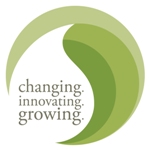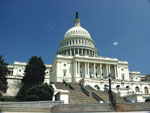Only Days Left to Register for NMPF’s 2013 Annual Meeting
October 07, 2013 There are less than two weeks left to register for NMPF’s annual meeting at the Arizona Biltmore Hotel in Phoenix November 11 – 13. The meeting is held jointly with the National Dairy Promotion and Research Board and the United Dairy Industry Association.
There are less than two weeks left to register for NMPF’s annual meeting at the Arizona Biltmore Hotel in Phoenix November 11 – 13. The meeting is held jointly with the National Dairy Promotion and Research Board and the United Dairy Industry Association.
Individual and group registrations, along with hotel reservations, can be made conveniently online at www.dairyevents.com. Or they can be mailed or faxed in. But all registrations plus payments must be submitted no later than Thursday, October 17.
With a theme of “Changing. Innovating. Growing,” the meeting offers two core days of programming, plus opportunities to network with producers and industry leaders from across the country. There also will be touring and shopping opportunities in one of the nation’s fastest-growing and most dynamic cities. Producers, cooperative staff, suppliers, trade press, and all others from the dairy sector are encouraged to attend.
Topping the program is a Tuesday afternoon speech by Peter Sheahan, CEO of ChangeLabs™, and an internationally-known business thinker. The author of six books, Sheahan has worked with some of the world’s leading brands, including Google, News Corporation and Harley Davidson.
Former NFL head coach and current ESPN analyst Herman Edwards speaks at the opening lunch on Tuesday while Nashville recording artist James Wesley entertains at the banquet Wednesday night. Visit the NMPF website for more information.
NMPF Working with CCFN & U.S. Government to Combat Restrictions to U.S. Cheese Exports
October 07, 2013Through its work in the Consortium for Common Food Names (CCFN), NMPF has continued to support extensive efforts to preserve market access for U.S. cheeses in several Latin American countries.
Products facing potential restrictions include parmesan, feta, mozzarella, provolone, romano, brie, camembert, fontina, gorgonzola, emmental, and pecorino. Countries where restrictions are developing include Colombia, Costa Rica, El Salvador, Guatemala, Honduras, Nicaragua, Panama, and Peru.
In addition, limits on use of these and additional products are expected to be proposed in Singapore, a hub for shipments throughout Asia. Members concerned about this issue and interested in getting additional information can contact Shawna Morris at smorris@nmpf.org.
FARM Program Report to be Featured at November Annual Meeting
October 07, 2013The latest results from NMPF’s comprehensive, dairy industry-wide animal care program, National Dairy FARM Program: Farmers Assuring Responsible ManagementTM, have been compiled and will be released next month at the NMPF-DMI-UDIA annual meeting.
The 2013 Year in Review for the National Dairy FARM Program will highlight results of the only nationwide program addressing animal care by the nation’s dairy farmers. The report includes review of the recent changes made to the FARM Animal Care guidelines, results from data collected during the Second-Party evaluations and the findings of the Third-Party verification. With more than 70 percent of the U.S. milk supply now enrolled in the FARM program, the report will provide assurance of the industry’s high-level commitment to animal care. The Year in Review will be released in November and will be made available online at the FARM Program website, www.nationaldairyfarm.com.
Producers, Processors Join Forces to Oppose Wisconsin Raw Milk Bill
October 07, 2013NMPF and the International Dairy Foods Association (IDFA) joined forces in September to urge state lawmakers in Wisconsin to reject legislation allowing sales of unpasteurized milk to consumers. It was the second time in three years that groups representing milk producers and milk processors teamed up to oppose raw milk legislation in the nation’s second-largest dairy state.
In a letter to state senators, NMPF and IDFA said the risks of consuming raw dairy products are not worth any of the claimed benefits of raw milk to consumers or producers.
“Consumption of raw milk has been opposed by every major health organization in the United States, including the American Medical Association and the American Academy of Pediatrics,” the letter said, noting that raw milk is a vehicle for transmitting E. coli 0157:H7, Campylobacter, Listeria monocytogenes, and Salmonella and other pathogens.
“The link between raw milk and foodborne illness has been well-documented in the scientific literature, with evidence spanning nearly 100 years,” the letter said.
Wisconsin has been at the center of a vigorous raw milk debate since 2010, when former Democratic Governor Jim Doyle vetoed legislation permitting on-farm sales. His successor, Republican Scott Walker, initially said he would sign similar legislation if it included provisions safeguarding public health. More recently, however, Walker has expressed concern about what legalizing raw milk sales would mean for Wisconsin’s dairy industry.
NMPF Chief Operating Officer Jim Mulhern called it “disheartening” that lawmakers in America’s Dairyland would even consider legislation allowing raw milk sales. “The benefits of consuming raw milk are illusory,” Mulhern said, “but the painful costs of illness and death are very real.”
Recent CWT Export Assistance Puts 2013 Product Volumes Ahead of 2012
October 07, 2013Through September of 2013, Cooperatives Working Together (CWT) has provided export assistance helping members to sell 102 million pounds of cheese and 72 million pounds of butter to 37 countries on six continents. These volumes represent a 9% year-to-date increase in cheese volume and a 28% increase in the tons of butter (82% butterfat) that CWT has helped its members to sell. The products will be delivered now through March 2013.
How important are dairy product exports to dairy farmers’ milk checks? NMPF economist Dr. Peter Vitaliano estimates that the growth in U.S. dairy exports over the past three years, 2010 through 2012, has increased the average U.S. producer milk price by $1.35 per hundredweight (cwt.), and generated an additional $9.1 billion in net income for U.S. dairy farmers during those three years. In that three-year period, CWT provided assistance for members to export 63 million pounds of butter and 250 million pounds of American-type cheeses.
The CWT program is valuable to all of its members, even those who are currently exporting product. Of the 37 current CWT member cooperatives, 11 are using the Export Assistance program. The 26 cooperatives not currently using the program know that their businesses and their dairy farmer owners benefit from their 4¢ per hundredweight investment in CWT through higher market prices resulting from the increased exports.
It’s Time to Name the New REAL® Seal Cartoon Character
October 07, 2013 The suggestions are in, and the nominees are: Dairyus, Milkdrop, and Roscow. Now it’s up to you to pick one of those three as the name for the new REAL® Seal animated cartoon character.
The suggestions are in, and the nominees are: Dairyus, Milkdrop, and Roscow. Now it’s up to you to pick one of those three as the name for the new REAL® Seal animated cartoon character.
Votes can be cast on the REAL® Seal website through Tuesday, November 5. Fittingly, that’s Election Day. Any member of the public can vote. The results will be announced November 12 at the NMPF annual meeting in Phoenix.
It’s all part of NMPF’s effort to revitalize the REAL® Seal and build awareness of the benefits of real milk among a new generation of consumers.
“We’re excited to use the new animated REAL® Seal character to help kids, parents, and dairy fans of all ages learn about the foods made with real American dairy products,” said NMPF Chief Operating Officer Jim Mulhern. “And giving people a chance to vote for the character’s name is democracy in action.”
NMPF used the REAL® Seal website and Facebook page to gather more than suggestions for the name over the summer. More than 100 suggestions were made.
NMPF took over management of the REAL® Seal last year. It is using social media and other means to inform consumers about the iconic dairy symbol and the advantages of real dairy foods. The REAL® Seal not only means a product is a real dairy product, but that it is made with milk from cows on U.S. dairy farms and without imported, imitation or substitute ingredients.
NMPF has made a significant investment in promoting the REAL® Seal. Until last fall, the REAL® Seal website was targeted mostly to companies interested in using the seal on their products. Today, it is focused on consumers. A buyer’s guide will soon be added to make it easier for consumers to buy real dairy products.
Farm Bill Stymied by Congressional Battles over the Budget, Debt Limit
October 07, 2013 The 2013 farm bill inched forward in September and seemed headed for a House-Senate conference committee until the Congressional agenda was hijacked by major fights over the budget and raising the limit on the national debt. Little more is likely to happen until those two issues are resolved at some point in October.
The 2013 farm bill inched forward in September and seemed headed for a House-Senate conference committee until the Congressional agenda was hijacked by major fights over the budget and raising the limit on the national debt. Little more is likely to happen until those two issues are resolved at some point in October.
Before the budget impasse took center stage last week, the House rejoined the separate measures reauthorizing farm and nutrition programs into one large bill, similar in scope to the Senate bill. That prompted the Senate to reappoint its agriculture conference committee members in preparation for negotiations with the House over a final, compromise farm bill. Among the major issues to be worked out in conference are a funding level for the food stamp program (somewhere between the House’s $40 billion in cuts, and the Senate’s $4 billion), and reform of the dairy program.
In terms of dairy policy, the Senate bill, passed in June, includes a voluntary program offering producers margin insurance. Those enrolling in the program also will be subject to a market stabilization program asking them to trim production if milk supplies outstrip demand, prices fall, and margins shrink precipitously. According to an analysis by the University of Missouri, the Senate bill would have increased net farm revenue by $.55 per cwt. from 2009 through 2012, had it been in place in recent years.
The House, meanwhile, passed a weaker insurance program that does not include the market stabilization element. Most national and state dairy organizations favor the Senate provisions because the House bill will not rectify low-margin conditions, meaning that dairy farmers could face long periods of severely depressed prices.
NMPF urges dairy farmers to continue to tell lawmakers to pass a farm bill that includes the Senate dairy policy reforms. Farmers can use NMPF’s Dairy GREAT system to email Capitol Hill.
Meanwhile, some farm programs, including MILC payments, expired with the end of the fiscal year September 30. That will have little practical effect on dairy producers, since MILC payments are not expected between now and December 31. Other programs, including the dairy price support program, are authorized through the end of the calendar year.
Should Congress be unable to reach agreement on a new long-term farm bill by then, another extension of current programs is possible. In the absence of either another extension or passage of a farm bill, farm policy would revert back to the permanent law of 1949.





